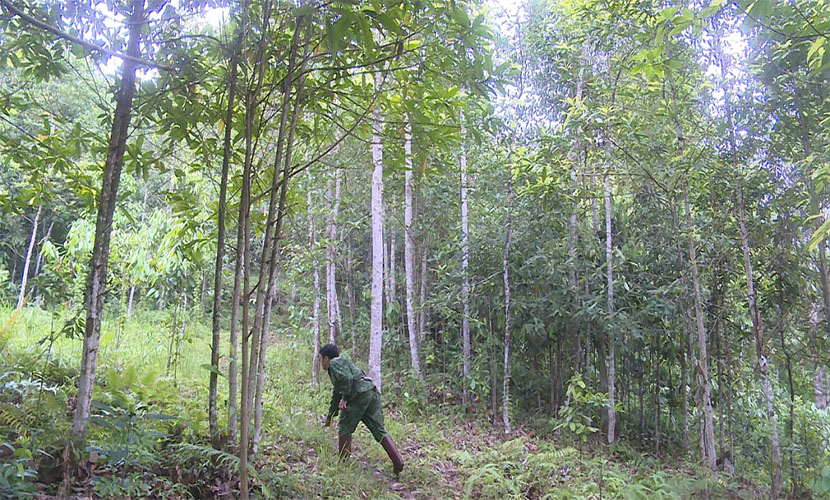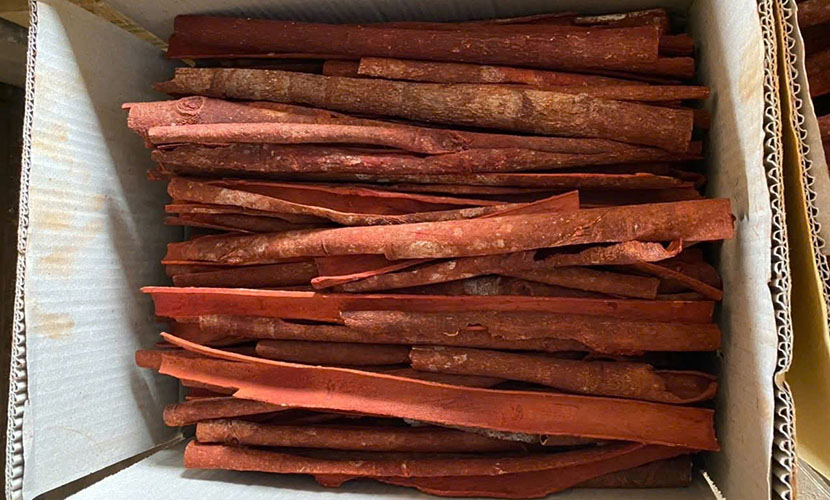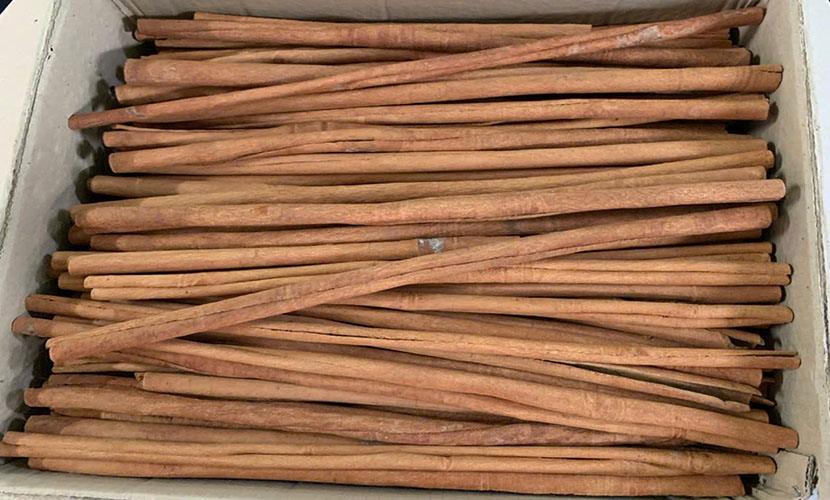
Although Cao Bang province has great potential in forest land, it still faces many challenges in forestry development. Vietnamese cinnamon for export, like a fresh breeze, has brought a stable source of income to people in growing areas.
Cinnamon has now become a main crop, introduced into economic development programs by many districts. Cinnamon trees made an important contribution to rural development. Therefore, they improved livelihoods and opened a path to prosperity for local people.

Vietnamese cinnamon forest
Traveling along the winding road to Le Loi commune, Thach An district, one can easily see the green cinnamon forest belonging to Ms. Huyen’s family. “This area used to be full of mixed forests. Few people paid attention to Vietnamese cinnamon for export,” Ms. Huyen shared. Cinnamon is a crop harvested for its bark, which is an important material in medicine, spice, fragrance, and for handicrafts.
In Thach An, Vietnamese cinnamon barks are purchased by businesses and processed as a spice for export. In 2000, Ms. Huyen’s family boldly converted their mixed forest area to cinnamon plantations, using natural care methods. After more than 20 years, their cinnamon forest now yields nearly 2 tons of fresh cinnamon bark per harvest.
“With stable prices and the company collecting right at the farm, our family feels secure growing cinnamon,” she said. In addition to cinnamon, she also grows star anise to diversify her income, earning nearly 100 million VND per year. This is a high income for a disadvantaged area like this.
Not only Ms. Huyen’s family but now thousands of households in Thach An district grow Vietnam’s cinnamon. Cultivating Vietnamese cinnamon for export has become a new agricultural profession, supported by strong cooperation among the “four stakeholders”. Specifically, they are farmers, scientists, government, and businesses.

Split cassia from Vietnam
Alongside the care of of mature cinnamon trees, Thach An district has expanded to 1,788 hectares of cinnamon. With economic efficiency of 300 million VND per hectare, Vietnamese cinnamon is proving to be a high-income crop for farmers.
Beyond cinnamon barks, the tree trunk, branches, and leaves are also marketable. Thanks to these advantages, cinnamon continues to be the crop of choice for long-term economic development by many farmers. In the coming time, local authorities will encourage people to expand cinnamon growing areas to further improve income.
“Thach An district has identified cinnamon development as one of its priority sectors. Therefore, the district provides full support for Vietnam’s export companies of spices to participate in value chain partnerships with farmers. With a stable market, people feel secure in production,” said Mr. Phuc, Chairman of Thach An District.
Establishing a closed-loop production chain and enhancing the value of cinnamon is a sustainable direction jointly implemented by export companies, local authorities and farmers. Currently, these export companies are cooperating with several districts to develop nearly 3,000 hectares of cinnamon in Cao Bang province. Each year, they purchase 500 to 1,000 tons of fresh cinnamon, producing dried products worth 40 to 50 billion VND.

Vietnamese cinnamon for export
Ha Lang district has also successfully developed Vietnam’s high-quality cinnamon plantations on formerly mixed forest land. Alongside over 100 hectares ready for harvest, the district plans to plant 10 new hectares in 2024. Mr. Khiem of An Lac commune shared that although cinnamon is a long-term crop, it requires little care while generating higher income than many traditional crops. With a stable market, people have been actively expanding cinnamon cultivation.
According to export companies, next year they plan to invest 60 billion VND to build a packing house for cinnamon and star anise in Thach An district. The capacity will handle 10,000 to 20,000 tons of fresh cinnamon bark per year.
The development of cinnamon in Thach An and Ha Lang districts, with the active involvement of businesses, has proven economically effective. Through cinnamon cultivation, many farming households have achieved stable incomes, improved livelihoods. As a result, they have gradually escaped poverty, paved the way for sustainable prosperity through forestry.
Vietnamese source: https://nongnghiephuuco.vn/trong-que-xuat-khau-huong-lam-giau-cho-nong-dan-7412.html
